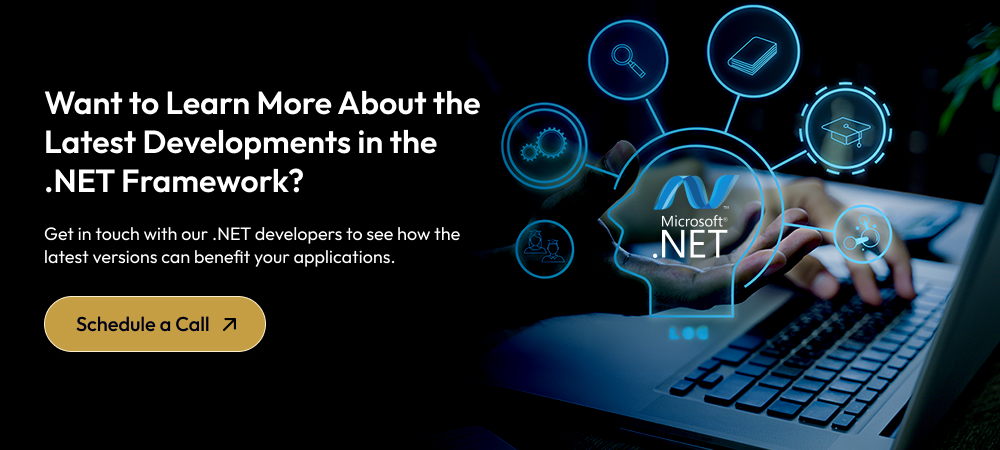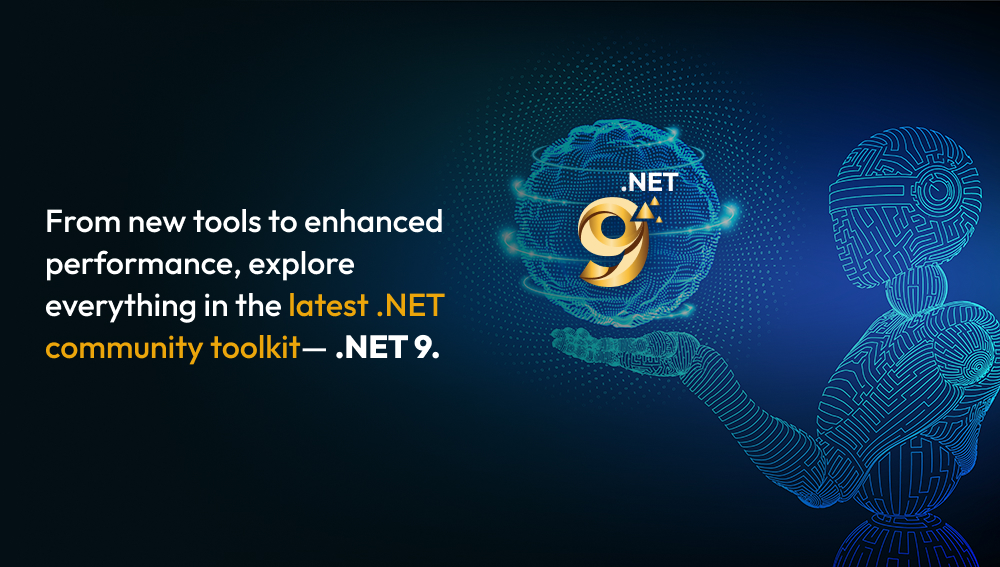
.NET has been developers’ favorite for over 25 years, and it’s easy to see why. Even after decades of updates, you can still work with the same code and libraries without worrying about breaking your app by using an older version. This remarkable backward compatibility provides a stable foundation that allows applications to scale and evolve seamlessly, enabling developers to innovate confidently without requiring extensive rewrites.
With the arrival of the latest .NET framework update—.NET 9, it gets even better, offering new features that help you create high-quality, future-ready applications, all while staying grounded in what makes this framework so reliable. Let’s explore the .NET 9 community toolkit.
The .NET Community Toolkit
Before diving into the details, let’s go over a quick recap of the core components of the .NET development tools.
.NET Versions
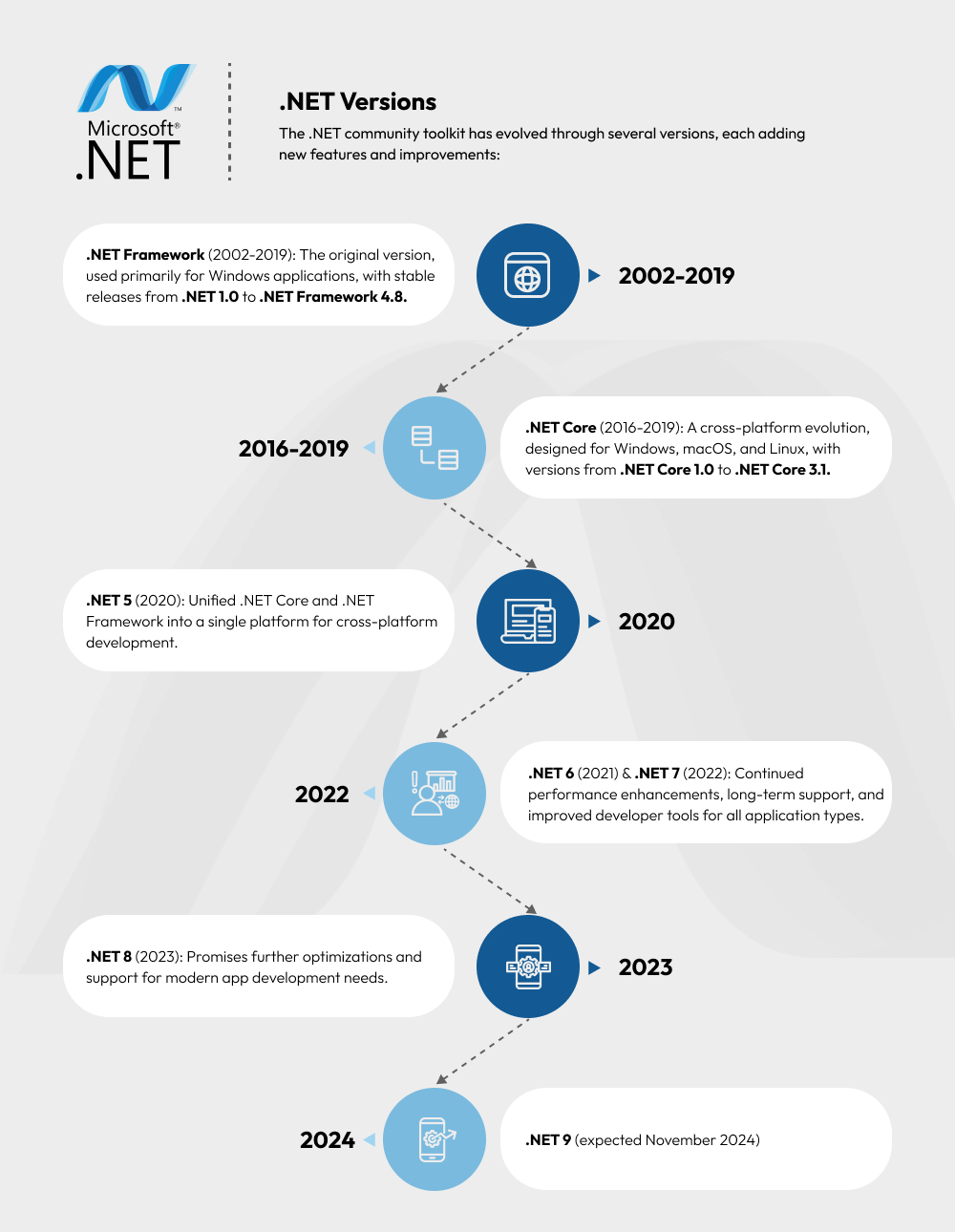
.NET Frameworks
• ASP.NET
A framework for building dynamic web applications and services, originally tied to .NET Framework, now available as ASP.NET Core for cross-platform use with .NET Core and later versions.
• Xamarin
A framework for building mobile applications on iOS, Android, and Windows using C#. Now integrated within .NET as .NET MAUI (Multi-platform App UI).
• Mono
An open-source implementation of .NET for Linux and other platforms, used primarily for game development and in environments requiring a lightweight runtime.
• .NET MAUI (Multi-platform App UI)
Introduced as part of .NET 6, .NET MAUI is the evolution of Xamarin, designed for cross-platform mobile and desktop applications on Android, iOS, macOS, and Windows.
.NET Programming Languages
- C#: A versatile, object-oriented language commonly used in .NET development, known for its simplicity and power.
- VB.NET: Visual Basic for .NET, favored for ease of use and readability, especially in enterprise applications.
- F#: A functional-first language ideal for applications requiring concise, efficient, and robust code.
- C++/CLI (Common Language Infrastructure): A version of C++ adapted for .NET, often used for interoperability with C++ code in .NET applications, particularly when performance or low-level system access is required.
Why .NET Development?
.NET is a widely adopted application development framework used by over 25% of software developers (as of 2024). Developers often seek cohesive solutions that can scale alongside their projects and .NET’s expansive ecosystem offers a solid foundation for building modern applications with flexibility, performance, and library support.
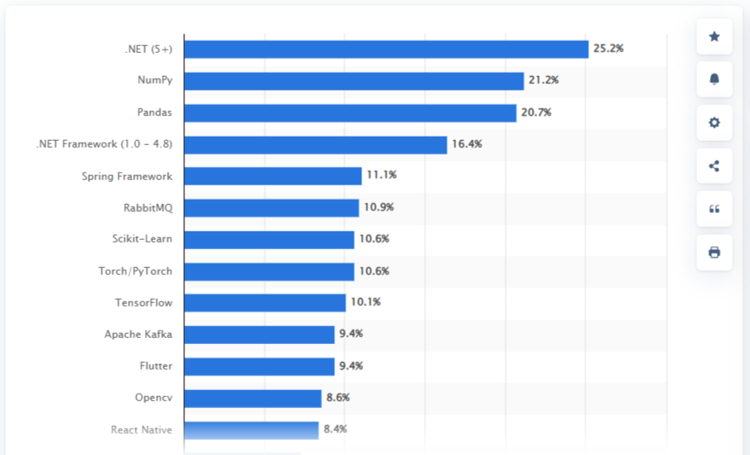
Some other reasons why .NET is a preferred development framework.
- .NET Core has turned .NET into a true cross-platform framework. Initially designed for Windows applications in the 2000s, .NET now allows developers to create applications that can run on Windows, macOS, Linux, and mobile platforms like iOS and Android.
- With the release of .NET 5 in 2020, Microsoft unified .NET Core and the .NET Framework under a single .NET platform. This unification enabled advanced tooling libraries and capabilities required for futuristic applications.
- The .NET framework includes the Base Class Library (BCL) for various essential functionalities, from data manipulation to threading and I/O operations. On top of the BCL, developers have access to NuGet, an extensive package manager that offers libraries for almost any need: security, cryptography, data analytics, UI components, and more. The Community Toolkit builds on this, offering optimized components for handling MVVM (Model-View-ViewModel) patterns, asynchronous programming, and other core functionalities.
- .NET prioritizes safety with features like automatic memory management, type safety, and structured exception handling, all of which contribute to stable, reliable applications. Additionally, Code Access Security (CAS) enforces strict permissions, ensuring applications run within secure, predefined boundaries.
- .NET offers both Just-In-Time (JIT) and Ahead-Of-Time (AOT) compilation options, allowing hybrid apps to achieve near-native-like performance and speed. It also offers Garbage Collection (GC) optimizations in recent .NET versions to ensure smoother memory management, making it particularly suitable for enterprise-grade applications that need to handle heavy traffic and large-scale data processing.
- ASP.NET Core, in particular, stands out for its low latency and high throughput capabilities.
What’s New in the .NET Community Toolkit?
The Microsoft .NET community toolkit has seen significant advancements recently. Here’s an overview of the latest .NET framework updates and emerging trends in the community:
1. Improvements in ASP.NET Core and Blazor
ASP.NET Core has received updates that improve Blazor, SignalR, minimal APIs, OpenAPI, and authentication and authorization mechanisms. Blazor now supports interactive server components to build rich web applications with server-side rendering. SignalR has been updated to integrate with ASP.NET Core’s authentication and authorization mechanisms. The framework now supports generating OpenAPI documents for controller-based and minimal APIs.
2. Introduction of .NET Aspire 8.x
.NET Aspire 8.x is a new, cloud-ready stack designed for building observable (where performance can be easily monitored and logged), production-ready, distributed applications. It is an opinionated framework recommending ready-to-use components in various combinations based on the desired functionality. Delivered through a collection of NuGet packages, it is currently previewed for .NET 9.
3. Advancements in ML Integration
The release of ML.NET 4.0 preview ( version due by November 12, 2024) gives more insight into .NET’s enhanced ML capabilities. This update will include better support for tools like tokenizers (e.g., Tiktoken) and popular AI models like Llama and CodeGen, making it easier for developers to add advanced AI features to their applications.
4. The Release of .NET 9
Microsoft has introduced .NET 9 with a focus on enhancing cloud-native and intelligent application development. This version achieves productivity improvements, streamlined deployments, and accelerated AI integration. We’ll explore it in detail in the next section.
Unpacking the Latest in .NET 9: Key Features and Enhancements
Microsoft’s .NET 9 update introduces a myriad of new features and enhancements aiming at improving developer productivity, application performance, and cross-platform capabilities.
Better Runtime
In .NET 9, several attributes are introduced to support Feature Switches with Trimming. These attributes help developers include or exclude specific functionalities during trimming or Native Ahead-Of-Time (AOT) compilation. Some of them are:
- RequiresDynamicCode: Marks methods that require dynamic code generation.
- RequiresUnreferencedCode: Used to denote methods that rely on reflection or other runtime features that may not work properly when code is trimmed.
- DynamicallyAccessedMembers: Allows developers to specify which members of a type should remain accessible even after trimming.
- FeatureSwitchDefinition: To treat a feature-switch property as a constant when trimming.
- FeatureGuard: To treat a feature-switch property as a guard.
Improved Garbage Collection (GC)
With the introduction of Dynamic Adaptation to Application Sizes (DATAS) as a default feature, .NET 9 significantly improves garbage collection. DATAS dynamically adjusts memory management based on the application’s memory requirements, offering a more efficient and responsive process. This is done through intelligent heap size adjustment, real-time app size adaptation, and reduced manual GC configurations.
Improvements in .NET Library Libraries
.NET 9 introduces many library improvements for the .NET community. This includes support for nullable reference type annotations and exporting JSON schemas through System.Text.Json enhancements.
New methods like CountBy and AggregateBy enable aggregation by key without allocating intermediate groupings, streamlining data processing tasks.
The PriorityQueue<TElement, TPriority> collection now includes a new Remove method that allows developers to update the priority of an item directly.
.NET 9 also introduces a “one-shot” hash method on the CryptographicOperations type, which lets developers generate hash values in a single, efficient operation.
With the new PersistedAssemblyBuilder type, developers can save an emitted assembly directly.
SDK and Tooling Updates
The .NET SDK now supports workload sets, allowing developers to maintain all workloads at a specific version until explicitly updated. A new dotnet workload history command has been introduced, allowing developers to view the history of workload installations and modifications for the current .NET SDK installation.
Additionally, .NET’s integration with MSBuild has been improved with .NET 9, enabling developers to run tests in parallel across different target frameworks. Security audits on both direct and transitive package references have been internalized; they now run by default. .NET 9 also provides new MSBuild script analyzers, known as “build checks,” to help guard against defects and regressions in build scripts.
ML.NET 4.0
The ML.NET 4.0 preview introduces powerful new AI and ML capabilities for .NET. It enables developers to integrate advanced models like Llama and CodeGen into their applications. With built-in support for popular NLP tools, including tokenizers like Tiktoken, ML.NET 4.0 simplifies the process of adding AI-driven features.
This release adopts a “plug-and-play” approach, making it straightforward to incorporate functionalities like customer support automation, recommendation systems, and predictive text, expanding the versatility of .NET development tools for building smarter, more responsive applications.
ASP.NET Core Docker Support
The new .NET framework update also introduces Docker support for ASP.NET Core, internalizing containerization as a part of the development process. It will allow developers to package their applications with all necessary dependencies into a single, portable Docker container. This means streamlined deployment, faster scaling, and simplified DevOps workflows.
How Can it Benefit you?
The latest updates in .NET 9 bring together several enhancements that make application development a smarter investment, efficient, and high-quality. These enhancements, such as smarter resource management, have also increased the demand for .NET development services, leading companies to hire dedicated .NET developers. Here are some other benefits:
1. Cost Efficiency Due to Smarter Resource Management
The latest .NET community toolkit is designed to manage resources smartly, which means your applications can do more with less. This is a big deal for developers, especially when you’re hosting in the cloud, where every bit of saved memory or CPU can lower costs. With more efficient applications, your projects stay within budget, even as they scale up to handle more users or data.
2. Get More Done with Streamlined Development
Many of these .NET framework updates make everyday development smoother and less time-consuming. You’ll find that tasks like testing, handling data, and managing dependencies have been simplified, allowing you to focus on building features rather than fixing issues or configuring setups.
3. Better Application Quality
Quality and security are built into the core of .NET 9. You don’t have to jump through hoops to make your applications secure or reliable; the framework has you covered with solid defaults. This means fewer bugs and vulnerabilities to chase down later, so you can trust that what you’re building is robust from the start.
4. Accelerated Development
.NET 9 community toolkit helps you move faster by automating repetitive tasks, such as generating boilerplate code. From running tests in parallel to making debugging easier and builds quicker, these improvements also shave off time during the testing stage of development. You’ll build faster, catch issues earlier, resolve them, and keep your projects on schedule.
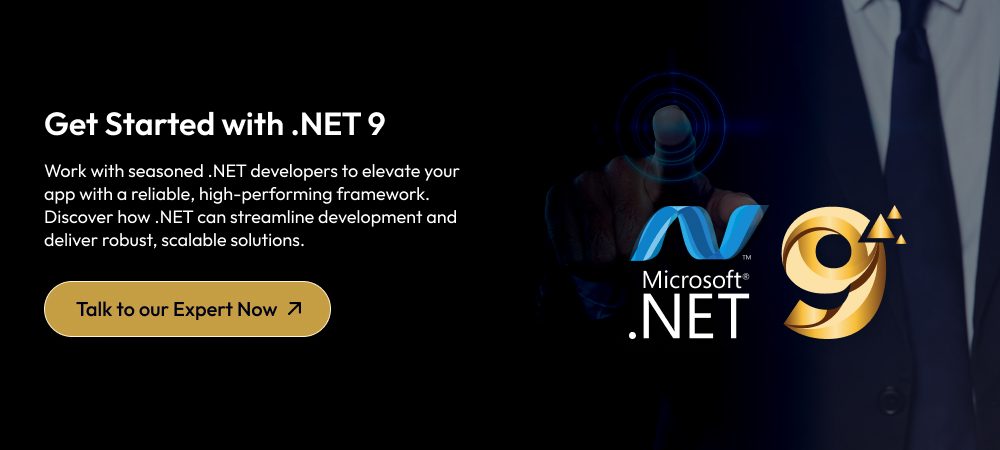
Key Takeaways
Microsoft’s strong backing and innovation support have helped .NET to position itself as a vital tool in application development. It offers a highly versatile and performance-optimized suite of tools and .NET libraries that enable developers to create everything from dynamic web apps to scalable cloud solutions. With the latest .NET community toolkit— .NET 9, Microsoft has pushed the framework even further, improving resource efficiency, streamlining workflows, and simplifying the integration of AI/ML capabilities to make development faster, more secure, and cost-effective. With Microsoft’s continuous effort and investment and an active & growing community surrounding this framework, you can expect more wonders in how .NET further shapes the future of scalable application development.
